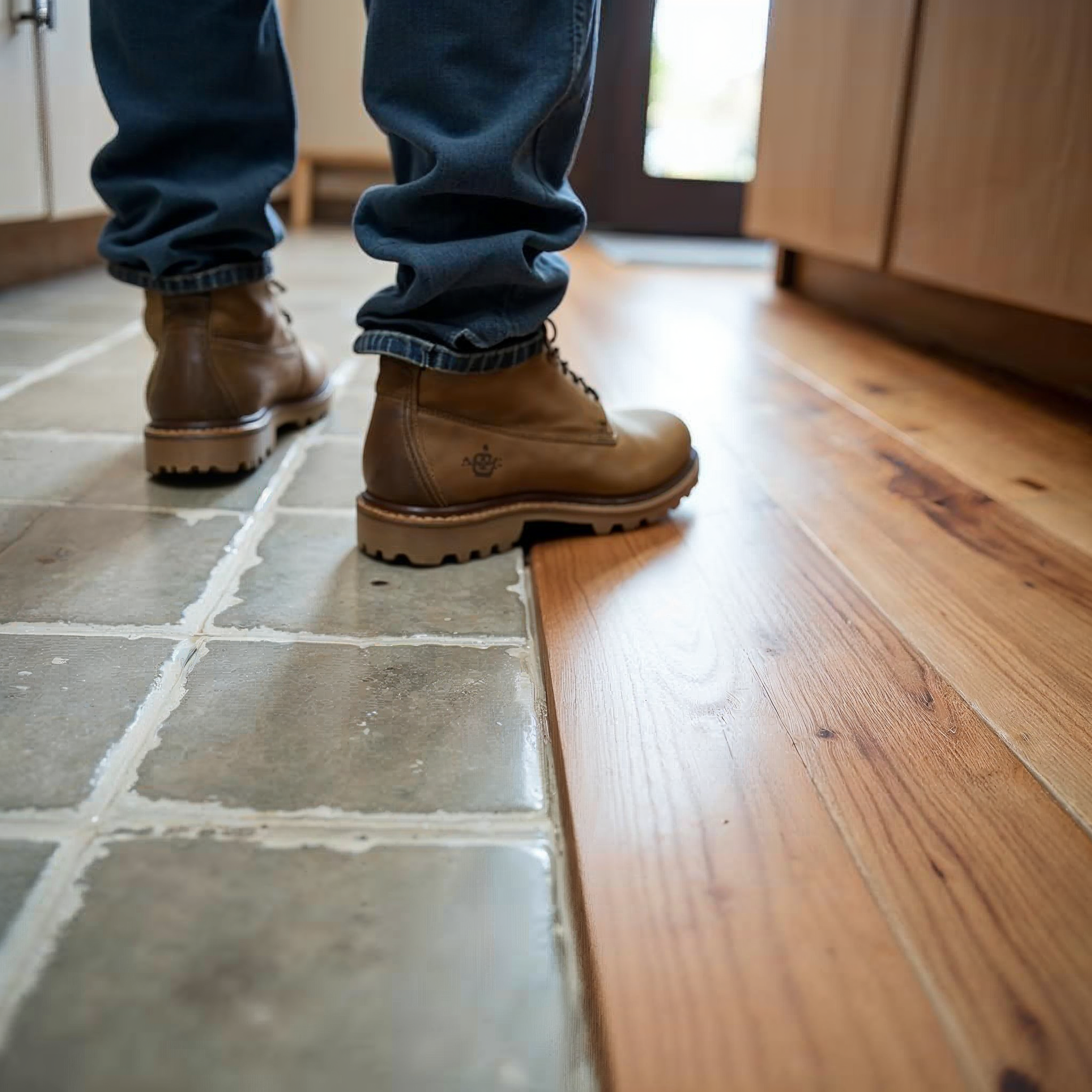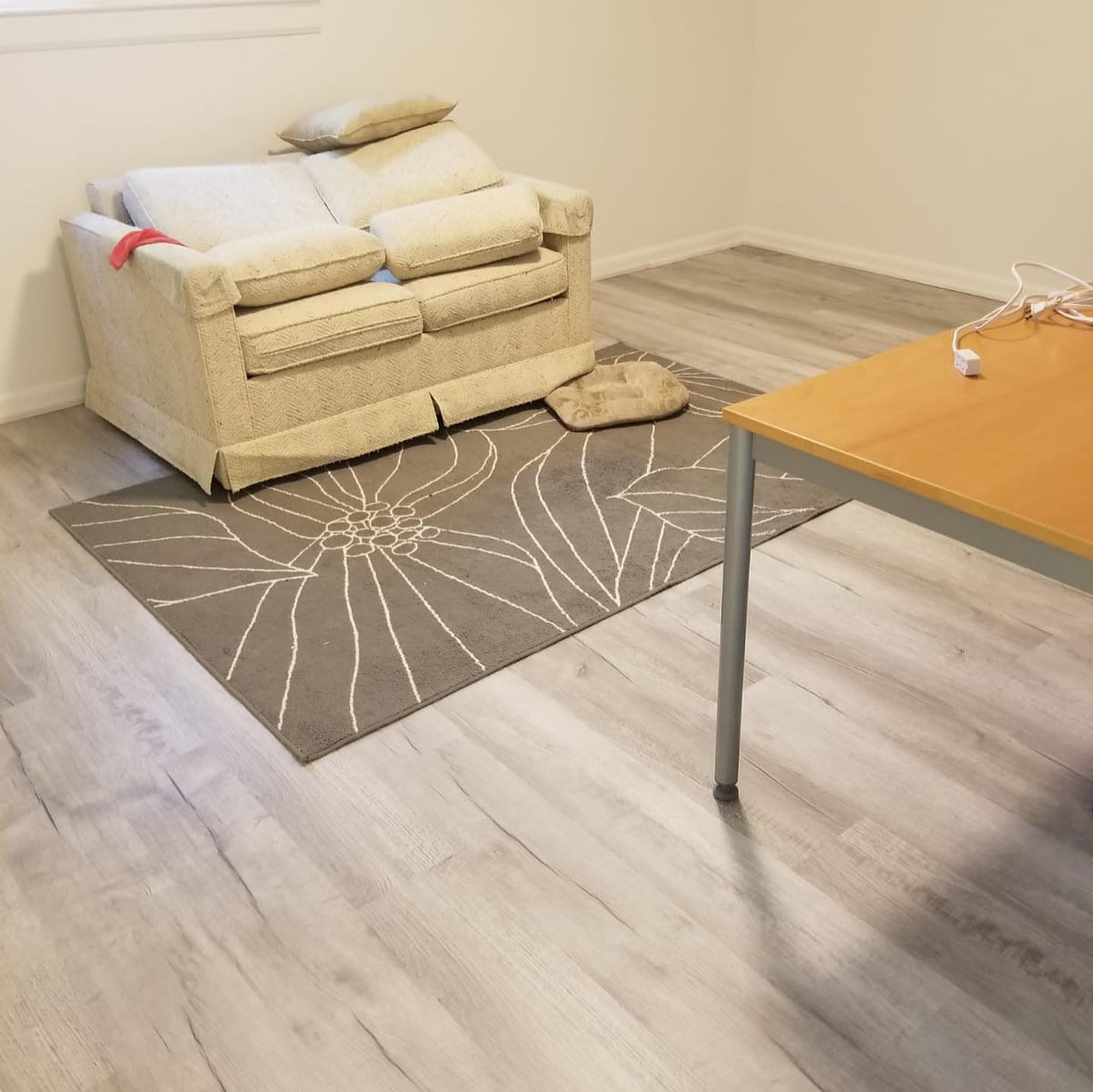Hardwood Flooring Types: A Comprehensive Guide
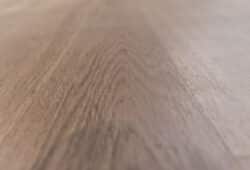
Exploring Oak, Pine, and Maple: Your Hardwood Flooring Options Explained
Most homeowners pick hardwood flooring without knowing how different types can change a room’s feel and durability. Oak flooring, pine flooring, and maple flooring each bring unique looks and strengths that might surprise you. This guide breaks down hardwood flooring types so you can choose the perfect fit for your home’s style and needs.
Understanding Hardwood Flooring Types
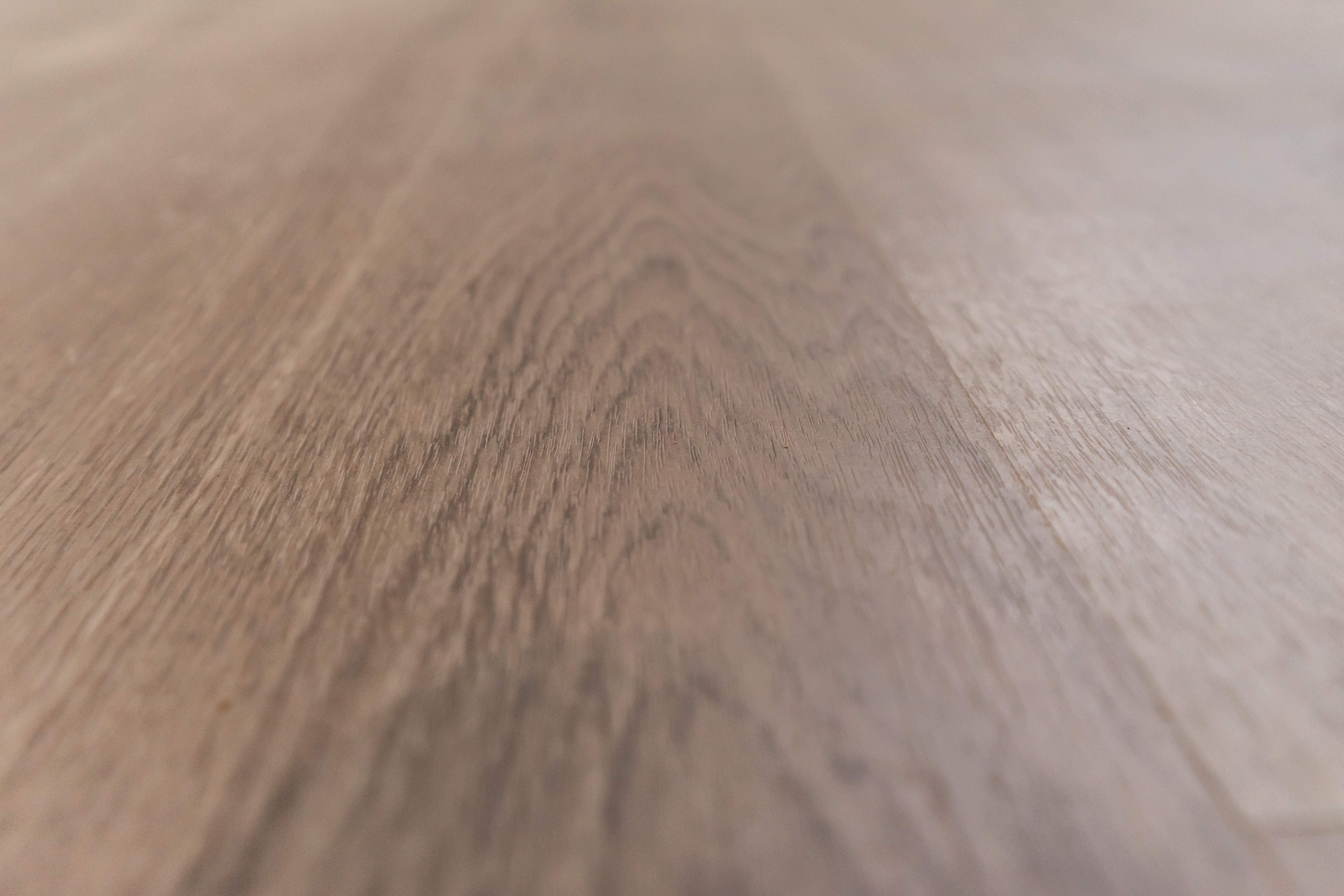
The right hardwood floor creates the foundation for your entire home’s look and feel. Each wood type brings its own character, color patterns, and durability levels to your space.
Exploring Oak Flooring
Oak stands as the most popular hardwood flooring choice in American homes—and for good reasons. This classic wood offers a perfect mix of beauty and toughness that works in almost any room.
Oak comes in two main varieties: red and white. Red oak shows off warm, reddish-pink tones with a more prominent grain pattern. White oak displays cooler, brown-to-gray tones with a smoother, more consistent look. Both types respond well to different stains, letting you customize your floor’s final appearance.
What makes oak special? Its grain pattern. Those swirling lines and distinctive markings hide scratches and dents better than many other woods. For busy households with kids, pets, or high traffic, this natural camouflage keeps your floors looking good longer.
Benefits of Pine Flooring
Pine brings warmth and character that few other woods can match. This softer wood develops a rich patina over time, telling your home’s story through its changing appearance.
Unlike harder woods, pine embraces wear. Each scratch, dent, and mark adds to its charm rather than detracting from it. This makes pine perfect for homeowners who want floors with personality and a lived-in feel. The wood naturally darkens and deepens in color as it ages, growing more beautiful year after year.
Pine floors cost less than many hardwood options. You’ll pay roughly $3-$6 per square foot for pine compared to $5-$10 for oak or maple. This price difference makes pine attractive for whole-house installations or when working with tight budgets.
One surprising fact: eastern white pine was used in colonial American homes and still performs beautifully centuries later. This proven track record shows pine’s lasting power despite its softer nature.
Advantages of Maple Flooring
Maple creates a bright, clean canvas for your home’s design. This tight-grained wood brings a smooth, consistent look that works beautifully in modern spaces.
The light cream-to-pale reddish-brown color of maple makes rooms feel bigger and more open. This natural brightness reflects light well, reducing the need for extra lighting in darker spaces. For small rooms or areas without much natural light, maple can transform the feel completely.
Maple ranks high on the hardness scale—about 25% harder than red oak. This extra hardness means better resistance to dents from dropped items, furniture legs, and daily wear. For kitchens and other high-impact areas, this toughness proves valuable over time.
Basketball courts often use maple for its durability under extreme conditions. The same qualities make it perfect for your busy home, standing up to years of foot traffic while maintaining its good looks.
Oak Flooring: A Popular Choice

Oak remains the standard against which other hardwood flooring types are measured. Its widespread availability and proven performance make it a go-to option for many homeowners.
Characteristics of Oak
Oak flooring brings warmth and timeless appeal to any space. The wood features distinct grain patterns that create visual interest across your floor.
Red oak shows a pinkish undertone with dramatic grain variations that catch the eye. These natural patterns make each floor unique and help hide dust between cleanings. White oak offers a more subtle look with less color variation but greater water resistance.
Both types take stain exceptionally well. This allows you to change the color dramatically—from light natural tones to deep, rich browns or even trendy gray washes. Few woods offer this level of flexibility in finishing.
Oak’s medium density gives it a comfortable feel underfoot. Not too hard, not too soft—this “just right” quality makes oak floors pleasant to walk on even without rugs or slippers. The wood also holds warmth better than tile or stone, keeping your feet more comfortable during colder months.
Pros and Cons of Oak
Oak flooring shines in durability, with a Janka hardness rating of 1290 for red oak and 1360 for white oak. This means it stands up to daily life in busy households without showing wear quickly.
The biggest pro: oak’s amazing value. It delivers excellent performance at a mid-range price point ($5-$8 per square foot for unfinished planks). This combination of quality and affordability explains why oak remains the most common hardwood flooring in American homes.
Oak also works with nearly any décor style. From traditional to contemporary, country to urban—oak adapts through different stain colors and finishing techniques. This versatility means your floors won’t look dated even as you update your furniture and décor over the years.
On the downside, oak can sometimes look too “expected” or common. If you want truly unique flooring, more exotic woods might better suit your taste. Oak also shows some expansion and contraction with humidity changes, though less than many other hardwood options.
Pine Flooring: A Rustic Appeal
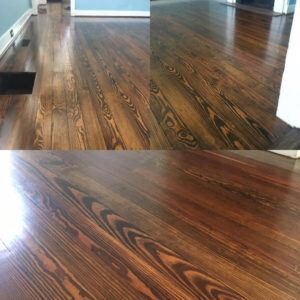
Pine brings casual charm and historical authenticity that many homeowners crave. This softer wood creates floors with personality and a story to tell.
Unique Features of Pine
Pine flooring stands out for its knots, swirls, and character marks that create visual drama. Unlike more uniform woods, pine celebrates its natural imperfections.
The color range spans from creamy white to amber gold, depending on the pine species. Eastern white pine offers a lighter palette, while southern yellow pine brings richer, warmer tones. Both develop a honey-colored patina as they age, growing more beautiful over decades.
Pine’s most striking feature? Its remarkable width options. While standard hardwoods typically max out at 5-inch planks, pine commonly comes in widths of 8, 10, or even 12 inches. These wide planks create a bold, dramatic look that showcases the wood’s natural character.
For historic homes or country-style designs, pine creates instant authenticity. The wood carries a sense of history and craftsmanship that newer materials simply can’t match. When you want floors that feel like they’ve always been part of the home, pine delivers perfectly.
Pros and Cons of Pine
Pine wins hearts with its budget-friendly price tag. At $3-$6 per square foot (unfinished), it costs significantly less than most hardwoods while still providing real wood beauty and warmth.
Another major advantage: pine’s sustainability. Pine grows much faster than hardwoods like oak or maple, making it a more environmentally friendly choice. Most pine comes from managed forests with responsible harvesting practices.
The wood’s softness allows it to be worked into beautiful detailed patterns and designs that harder woods can’t match. For homes with decorative flooring features, pine offers greater crafting potential.
The primary drawback? Pine’s softness means it dents and scratches more easily than hardwoods. With a Janka hardness rating of just 380-870 (depending on species), pine shows wear quickly in high-traffic areas. This creates a weathered, lived-in look some people love—but others find too rustic.
Pine also requires more maintenance than harder woods. You’ll need to refinish pine floors more frequently to maintain their protective coating and prevent damage from moisture and daily use.
Maple Flooring: A Classic Option
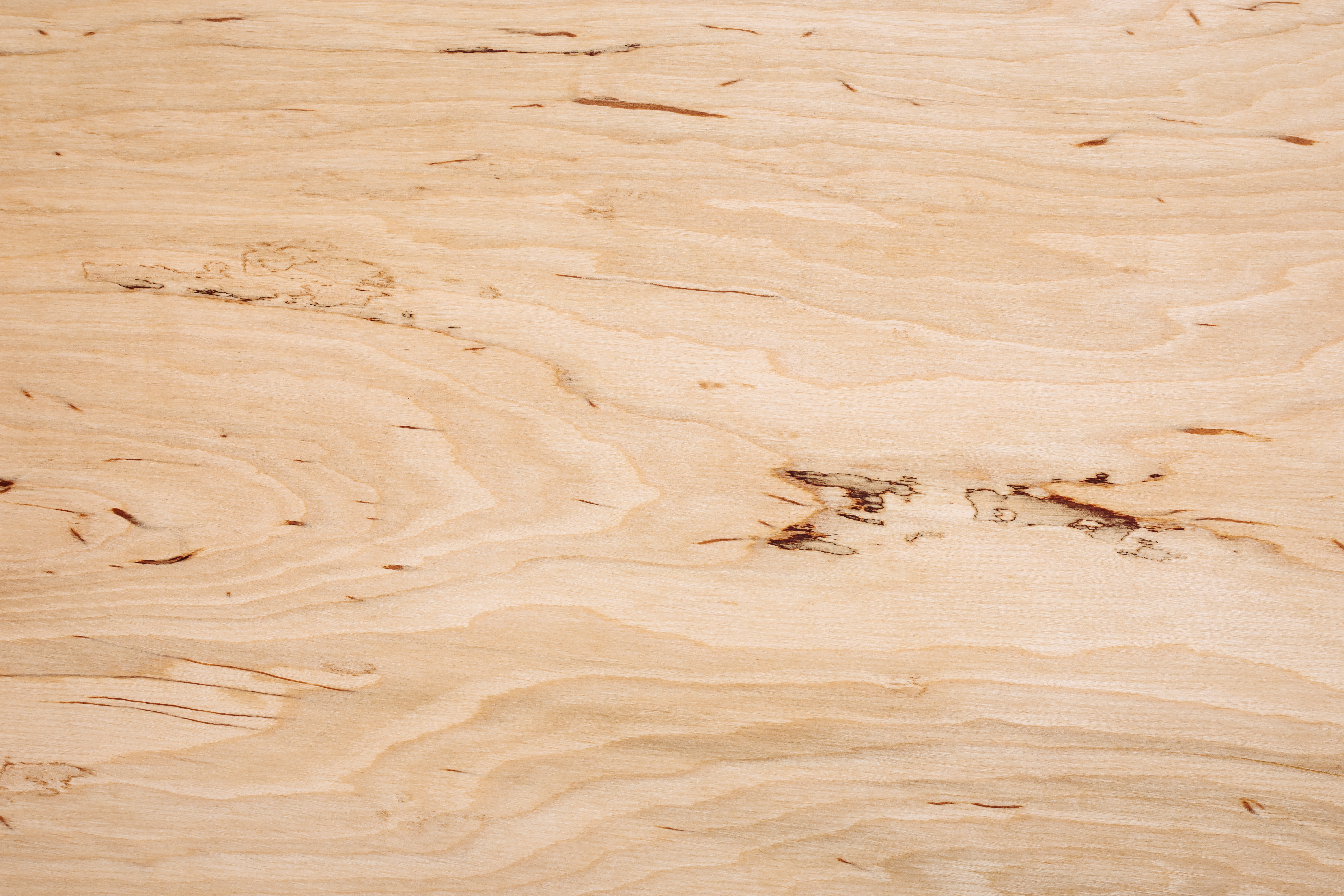
Maple creates clean, sophisticated floors that complement modern and minimalist design styles. Its subtle grain pattern offers understated elegance that never goes out of style.
Distinctive Features of Maple
Maple flooring stands out for its incredible smoothness and uniform appearance. The tight, closed grain creates a clean canvas without the pronounced patterns found in oak or pine.
The color story of maple centers on light cream and pale tan tones. This neutral palette works beautifully with both warm and cool color schemes in your furnishings and décor. The subtle background lets your design choices take center stage rather than competing with them.
One of maple’s most prized qualities is its remarkable clarity. The wood contains minimal mineral streaks or character marks, creating a clean, consistent look across your entire floor. This uniformity creates a sense of calm and order in living spaces.
Maple also contains unique figuring patterns in some boards—like bird’s eye, curly, or tiger maple—that add subtle visual interest without overwhelming the space. These natural variations appear as small swirls or ripples in the wood grain, creating gentle movement across your floors.
Pros and Cons of Maple
Maple excels in durability with a Janka hardness rating of 1450—higher than both red and white oak. This extra hardness makes maple an excellent choice for busy areas where furniture gets moved frequently or where dropped items might dent softer woods.
The light color brightens rooms naturally, making maple perfect for basements, north-facing rooms, or spaces with limited natural light. This brightness can make small spaces feel larger and more open without additional lighting.
Maple resists spills well when properly finished, making it suitable for kitchens and dining areas. The tight grain doesn’t absorb liquids as readily as more porous woods, giving you more time to clean up accidents before they cause damage.
The downside? Maple shows every scratch and scuff due to its light color and smooth grain. Dark marks stand out dramatically against the pale background, making maple less forgiving than more patterned woods like oak.
Maple also proves challenging to stain evenly. The dense wood absorbs stain unevenly, often creating blotchy results when darker colors are attempted. For this reason, many homeowners choose to keep maple in its natural light state rather than trying to darken it.
Choosing the Right Hardwood for Your Home
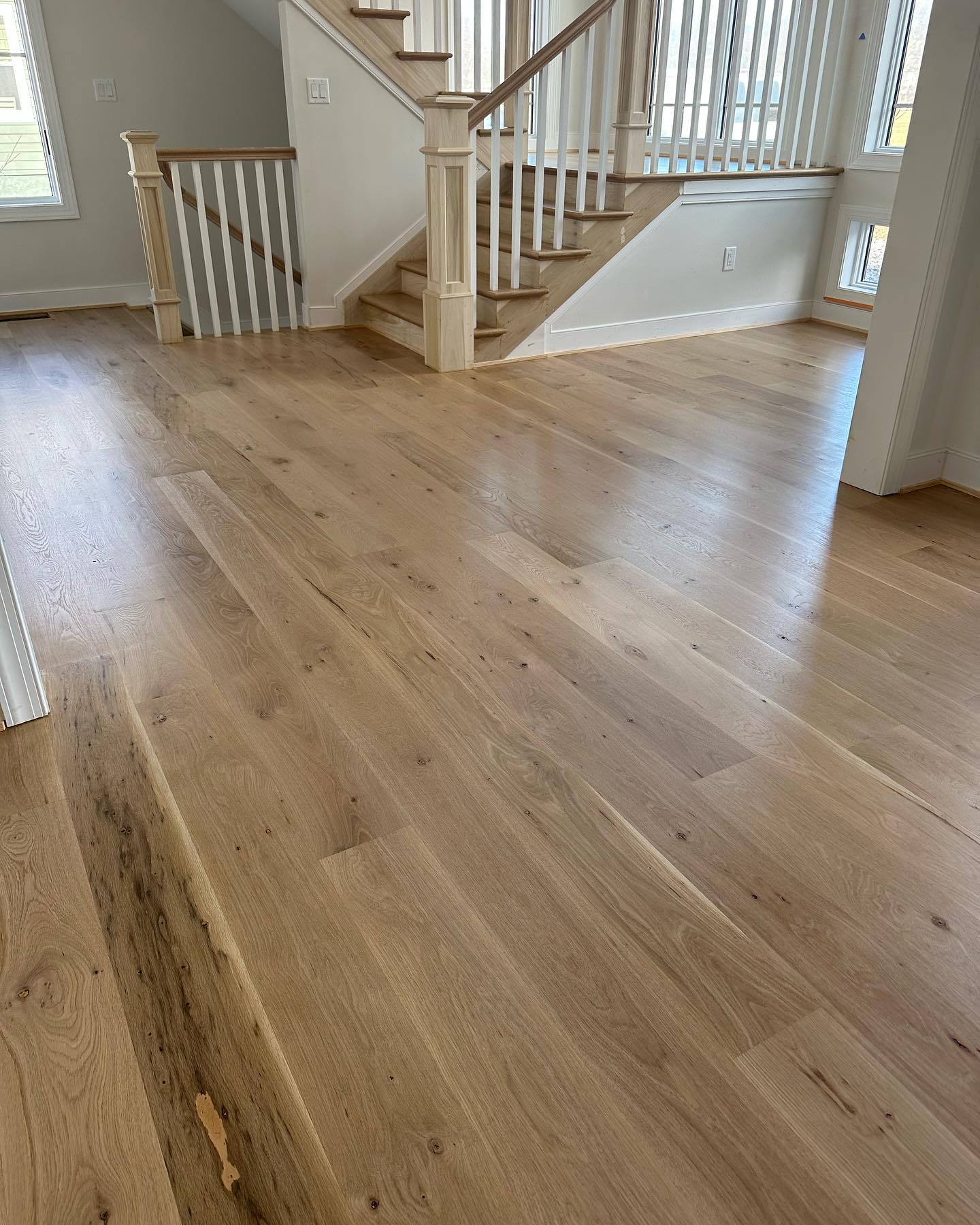
The perfect hardwood floor balances your lifestyle needs with your design preferences. Making a thoughtful choice now prevents disappointment later.
Factors to Consider
Your home’s traffic patterns should guide your wood selection. High-traffic areas like entryways and kitchens benefit from harder species like oak or maple, while bedrooms can work well with softer options like pine.
Think about your household members. Homes with active children or pets need more durable flooring that resists scratches and dents. The hardness rating (Janka scale) offers a good comparison point—higher numbers mean greater dent resistance.
Your cleaning habits matter too. Some woods show dust and pet hair more than others. Light-colored maple shows every speck, while oak’s varied grain pattern hides dirt between cleanings. Be honest about how often you’ll sweep or vacuum when selecting your wood type.
Budget plays a major role in your decision. Beyond the initial purchase price, factor in installation costs and long-term maintenance. Pine costs less upfront but may need refinishing sooner. Oak and maple cost more initially but often require less maintenance over time.
Making an Informed Decision
Visit showrooms to see and feel samples in person. Photos can’t capture the true color variations and texture of real wood. Walk on different woods with your shoes off to experience how they feel underfoot.
Bring home large samples (at least 12″x12″) and place them in different rooms at various times of day. Wood looks different under morning sunlight versus evening lamps. Watch how the color and grain interact with your existing furnishings and wall colors.
Talk with flooring professionals about your specific situation. They can recommend the best wood for your climate, subfloor condition, and installation method. Their experience with local homes similar to yours provides valuable insights you won’t find online.
Remember that wood floors last decades—often 50+ years with proper care. Choose what you’ll love long-term rather than following short-lived trends. The most successful floors balance timeless appeal with your personal style preferences.
Consider ordering small quantities of different woods for a custom mixed installation. Some designers create stunning floors by combining oak and maple in patterns, or using pine as a border around oak. These custom touches make your floors truly unique.
Fill out the form below and an AG Construction representative will contact you soon.
Contact Us Today


Whether you own a home or business, we’re your single source for complete flooring installation services! Our comprehensive services include:
- Hardwood staining, sanding, refinishing, restoration, and more!
- Carpet removal and installation
- Vinyl luxury plank replacement and installation
- Vinyl tile and COREtec installation
- And more!


